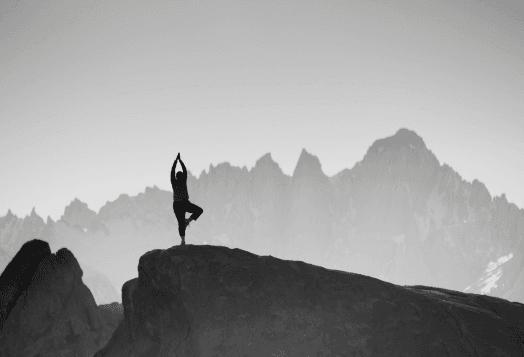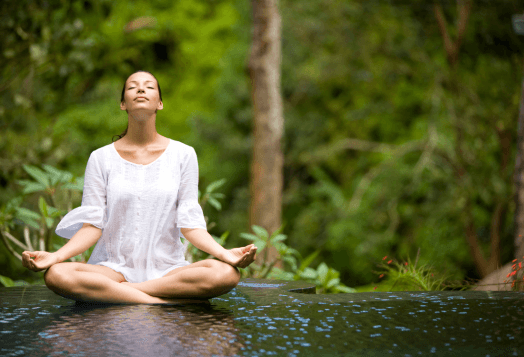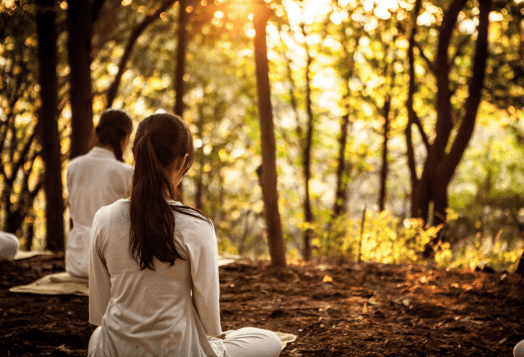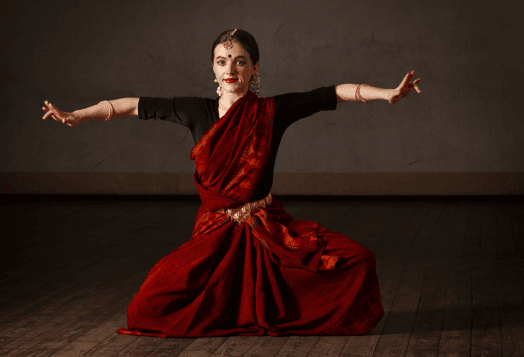In the chaos of buzzing notifications, tight deadlines, and the relentless hum of mental chatter, it’s easy to feel adrift. But nestled within the ancient folds of yogic wisdom lies a path that promises serenity, strength, and self-mastery. This is Raja Yoga, the timeless practice of training the mind, purifying the spirit, and unlocking true inner peace.

What is Raja Yoga?
Curious about what is Raja Yoga and why it's often called the “royal path”? The word Raja in Sanskrit means king, symbolising sovereignty, authority, and inner command. It is considered the king of yogic paths because it leads to complete mastery over the mind, body, and senses. This form of yoga is one of the four schools of yoga, as detailed in choosing the right yoga, all aimed at achieving a union with the higher self. It is also known as the Ashtanga Raja Yoga, rooted in the ancient Yoga Sutras of Patanjali, a foundational text in yogic philosophy dating back over 2,000 years. In these teachings, Patanjali outlines the eight limbs, which together form a structured journey of self-discipline and spiritual awakening.
Each limb is designed to systematically refine behaviour, enhance concentration, and transcend ego-based thinking. The ultimate goal? Samadhi. A state of blissful union with the true self or universal consciousness.
The Eight Limbs of Raja Yoga Explained
Let’s break down this system:
1. Yama - Ethical Restraints:
These are moral guidelines such as ahimsa (non-violence), satya (truthfulness), asteya (non-stealing), brahmacharya (moderation), and aparigraha (non-possessiveness). They cultivate harmony with others.
2. Niyama - Personal Observances:
These include shaucha (purity), santosha (contentment), tapas (discipline), svadhyaya (self-study), and Ishvarapranidhana (surrender to the divine). These create internal strength and purpose.
3. Asana - Physical Postures:
While modern yoga often emphasises complex poses, in this form of yoga, asanas are meant to develop a strong, steady, and comfortable seat for meditation.
4. Pranayama - Breath Control:
The regulation of breath helps still the mind and energise the body.
5. Pratyahara - Withdrawal of the Senses:
This is the inward turning of the senses. Freeing the mind from external distractions so it can look inward.
6. Dharana - Concentration:
The practice of single-pointed focus, often using a mantra, image, or the breath, to steady the mind.
7. Dhyana - Meditation:
This is an unbroken flow of awareness. When Dharana becomes effortless and continuous, it evolves into Dhyana.
8. Samadhi - Blissful Absorption:
The final stage is where the practitioner merges into pure consciousness and transcends ego, achieving spiritual liberation.
This eightfold path forms the art and science of Raja Yoga, a holistic practice integrating mind, body, and soul.
Benefits of Practising Raja Yoga
This ancient practice brings tangible shifts in how you think, feel, and interact with the world.
1. Mental Clarity & Focus
Tired of constant mind chatter? Raja Yoga benefits mental health. It helps improve attention span, cognitive clarity, and emotional regulation. Ideal for students, professionals, or anyone feeling mentally fragmented.
2. Stress Reduction & Inner Peace
If you're overwhelmed by stress, Raja Yoga asanas and breathing techniques for stress relief are a game-changer. The combination of breathwork and meditation soothes the nervous system, lowers cortisol, and helps manage anxiety.
3. Strengthens Willpower & Discipline
By following ethical principles (Yama and Niyama) and maintaining a consistent practice, you develop resilience, self-control, and fearlessness in the face of life’s challenges.

4. Spiritual Awakening
Through Dhyana and Samadhi, you reconnect with your higher self. Raja Yoga for spiritual growth is ideal for those seeking a deeper purpose and connection beyond the material world.
5. Holistic Wellbeing
By integrating physical stillness, breath awareness, ethical conduct, and meditation, this yoga supports harmony of body, mind, and spirit, promoting longevity and inner peace.
How to Begin & Build a Raja Yoga Practice
So, how to do Raja Yoga in your daily life without needing a Himalayan retreat or years of training? The beauty of this form lies in its simplicity and accessibility. Whether you're a beginner dipping your toes into meditation or someone looking to deepen your spiritual practice, this yoga practice offers a structured yet flexible way to cultivate inner calm.
1. Create Your Sacred Space
Find a quiet, comfortable spot in your home where you can sit undisturbed. This space will become your anchor.
2. Choose a Consistent Time
A Raja Yoga morning routine would be ideal, but any time works if you're consistent. Start with 5–10 minutes and gradually increase.
3. Begin with Breathwork (Pranayama)
Try Nadi Shodhana (alternate nostril breathing) or deep belly breathing to calm the nervous system and settle your thoughts. This primes the body and mind for Raja Yoga meditation.
4. Add Gentle Yoga Poses
Start with meditative asanas like Sukhasana or Padmasana. These Raja Yoga poses are less about flexibility and more about stillness and alertness.
5. Use a Mantra or Breath Anchor
In the Dharana stage (concentration), choose a simple mantra, as explored in meditation techniques, or focus on the natural rhythm of your breath. This helps develop mental focus and prepares you for deeper Dhyana.
6. Reflect & Journal After Practice
Post-meditation, take a moment to jot down your feelings, thoughts, or any intuitive insights. This builds mindfulness and deepens self-awareness.
7. Be Patient, Be Consistent
Even short daily practices yield long-term transformation. Remember, it’s not about perfection, it’s about presence.
Bonus Tip: Use Raja Yoga guided meditation audio to help you stay on track, especially as a beginner.

Your Path to Peace
Raja Yoga is more than a practice. It is a lifestyle, a living philosophy, and a quiet revolution of the spirit. Through the integration of daily discipline, ethical values, Raja Yoga meditation, breath awareness, and calming poses, you begin to realign with your innate peace and purpose.
Seekers of inner stillness, newcomers to yoga, and those navigating life’s storms can all find refuge with yoga instructors in this ancient yet ever-relevant tradition. This is your sign. The path is open. The journey is inward.
Disclaimer: The information provided is intended for general informational purposes only. It is not a substitute for professional advice or guidance. For personalised recommendations or specific concerns, please consult a certified professional.




